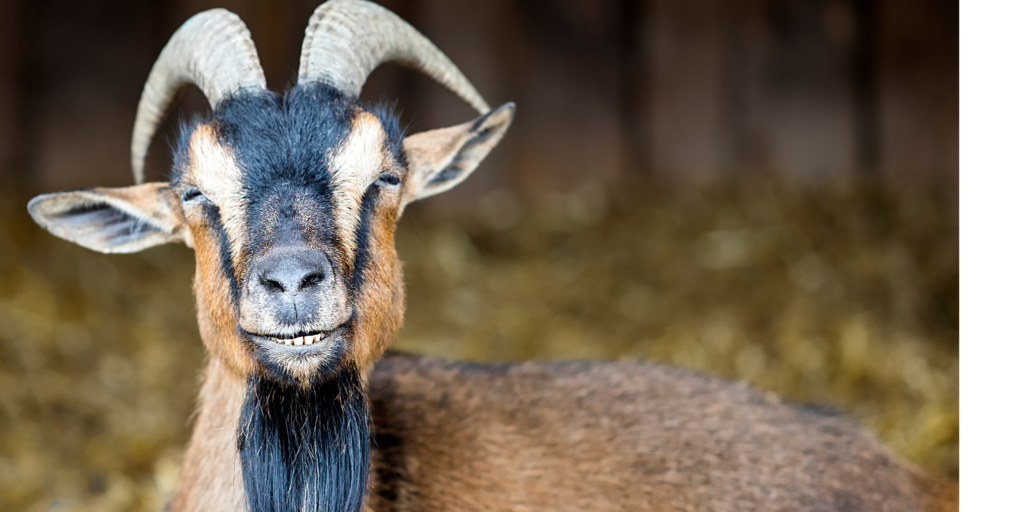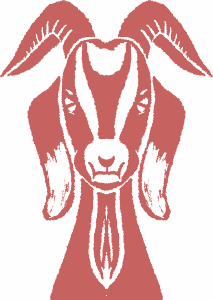
Non-Compassionate Sources
We at The Open Sanctuary Project disavow animal experimentation and any “use” of animals for human purposes. Because compassionate works on valuing the personality, intelligence, and unique attributes of many nonhuman animals are rare, in this resource, we draw from existing work that may be non-compassionate in nature but may, all the same, be used to improve the lives of residents. We work towards a future when compassionate, non-exploitive, and non-invasive research is the norm, but in the meantime, we will work with what we have to help sanctuaries help animals as effectively as possible. You can read a little bit more about our non-compassionate source policy here.
As caregivers, we face any number of challenges in our day. It can be tiring, and sometimes we run into situations that wrinkle our brows and cause us to frown. Discovering a section of fencing that needs mending as you are about to head home can certainly cause one to roll their eyes and huff as they head back to the maintenance shed. Have you ever wondered if residents notice this shift in mood? Our tone of voice or overt body language can communicate our emotional states. What about the look on our faces? In particular, can goat residents “read” our facial expressions? And, if so, does it affect how they interact with us? According to a 2018 study, goats do distinguish between happy and unhappy human faces!1 What might this mean for caregivers? What practical application might this have at a sanctuary? This third resource in our Science For Sanctuaries series will take a closer look at this study and its findings and discuss these very questions. Let’s get started!
More Than Goats
This resource covers a specific study regarding the ability of goats to distinguish between different human facial expressions. It is not asserting that goats are the only resident species with this ability. As noted below, there are a number of species with this ability, much more than listed. However, our Science for Sanctuaries series is intended to break down existing research in order to provide sanctuaries with data to inform care practices, and this is best done by narrowing our focus. In this case, we are focusing on goats and how this study can provide caregivers with useful information that can have practical applications at their sanctuary.
What We Know
There are a number of scientific reports on the ability of different nonhuman animal species (from sheep and cowsWhile "cows" can be defined to refer exclusively to female cattle, at The Open Sanctuary Project we refer to domesticated cattle of all ages and sexes as "cows." to wild birds and cephalopods!) to recognize the faces of their peers and distinguish between them and strangers.2,3,4,5 Other studies show that many species, such as sheep, archerfish, skuas (birds), and rats, specifically recognize individual humans.6,7,8,9 Let’s take this a step further and ask, can any species read human facial expressions and connect them with emotions? Well, simply put, the answer is yes, in some cases. According to additional research, species such as goats, horses, dogs, and pandas appear to be able to do this quite well! 10,11,12,13
When discussing goats in particular, research shows that goats will look to humans, literally, when they become stumped solving a problem in the hopes they will be given a clue or the human will otherwise assist them.14 Goats can also interpret visual cues from humans, such as a human pointing at and facing an object.15 In one study, whether a human’s eyes were opened or closed affected whether goats approached them or not, with goats being more likely to approach a human with their eyes open.16 This indicates that goats pay attention to our faces and adjust their behavior based on what they see and interpret. Lastly, and the reason for this resource, another study found that goats prefer happy human faces over angry human faces!1 Let’s look closer at how goats perceive and respond to human faces when they are smiling or frowning.
The Study
We were delighted to discover this study was carried out using compassionate science at a farmed animal sanctuaryAn animal sanctuary that primarily cares for rescued animals that were farmed by humans. in the UK! This is such a wonderful find as, sadly, many of the studies we come across are not compassionate. (We hope this is the beginning of more compassionate scientific research.) In this study, goat residents only participated in the research if they approached the humans involved on their own. Anyone who didn’t seek out contact with the humans involved with the research was left out of the study. Those who walked away, showing little interest in participating during the study, were not included and allowed to leave.
During this study, researchers presented goat residents with pictures of happy and angry faces of unfamiliar humans. As a whole, goat residents could tell there was a difference between the two faces and generally preferred approaching the happy faces. More specifically, goats interacted with happy faces first and for a longer time, and, interestingly, more frequently when the happy pictures were presented on the right side. This ties in with other research hypothesizing that mammalian brains may process positive emotions on the left side of their brain and negative emotions on the right. *The researchers note that it is possible the goats are avoiding the angry faces as opposed to simply being attracted to the happy faces.

Goats Prefer Positive Human Emotional Facial Expressions | Royal Society Open Science
Limitations

While this study is a fascinating look into the possible preferences of goats, there are limitations. The number of goat residents in the study was small (20 individuals), and the more data we have, the more confident we can be about the soundness of the findings. More compassionate studies that do not involve exploitationExploitation is characterized by the abuse of a position of physical, psychological, emotional, social, or economic vulnerability to obtain agreement from someone (e.g., humans and nonhuman animals) or something (e.g, land and water) that is unable to reasonably refuse an offer or demand. It is also characterized by excessive self gain at the expense of something or someone else’s labor, well-being, and/or existence. are needed to determine the effect of facial expressions on goat behavior. We are also unsure whether goats prefer happy faces or simply avoid angry ones. For now, at least, this study demonstrates goats differentiating between human facial expressions, which is useful information that can be applied in a sanctuary setting.
Practical Applications For Sanctuaries
How you appear to residents may make them more or less inclined to approach you. We all have rough days. Falling in the mud for a second time after the handle broke on the water bucket can put a scowl on your face. (Been there!) It is completely understandable and healthy to feel feelings of frustration. However, you may want to stop and take a few slow, deep breaths before entering a resident’s living spaceThe indoor or outdoor area where an animal resident lives, eats, and rests. and engaging with them. In situations that are already likely to make a goat resident hesitant or stressed, your demeanor can have an impact. A smiling face may put goat residents more at ease when combined with calm body language and patience. An angry face may make them uncomfortable engaging with you, adding to an already stressful situation for both of you.
Caregivers Deserve The Care They Give
Caregivers face a wide array of challenges every day. This can be physically, mentally, and emotionally taxing. Feeling tired, frustrated, or angry when these challenges pile up is completely understandable and normal. The best situations are where the caregiverSomeone who provides daily care, specifically for animal residents at an animal sanctuary, shelter, or rescue. can take space to regulate their emotions, for themselves and for residents. BurnoutA physical and emotion reaction to prolonged, unmanaged workplace stress. and compassion fatigue are real; caregivers need and deserve the care they put into the world daily. Taking time to process and release emotions and find ways to rest and experience joy is an important part of self-care. Good self-care translates to good resident care, and both parties deserve good care. If you are a caregiver, give yourself permission to rest, recover, and have a life outside the sanctuary. If you manage a care team, create a positive, appreciative culture that encourages and supports care staff.
As a caregiver, you can use the information provided by this study to provide better care for goat residents. There are a variety of situations where caregivers may find this info helpful in improving the well-being of goat residents. Here are just a few:
- When entering a resident’s living space
- When asking a goat resident to come in for the night
- When you need to separate a goat resident
- When getting to know a new or timid resident
- When teaching visitors how to behave around residents
- When training staff and volunteers who will interact with goats
- During health checks
Really, the information provided in this study could impact how a resident feels anytime you interact with them! If you want to understand and test this theory, you can try out sanctuary science and see what you learn about your residents. However, preparation and a careful approach are required in order to get reliable data. Ready to become a sanctuary scientist?

Sanctuary Scientists
You can be a sanctuary scientist and learn more about your residents and how best to meet their needs! Sound, reliable research requires a solid framework and controlled studies covering many details to collect valid data and provide accurate results. Controlled studies are those where every possible factor is kept the same for each individual or group, except for one individual or group being studied, who will have a single different factor introduced to them. You can learn a little more about controlled studies here.
Compassionate Science Only
We have mentioned it before, but this can’t be overstated: We at OSP fundamentally disavow animal experimentation and any “use” of animals for human purposes. No resident should ever be forced into a situation that might cause them harmThe infliction of mental, emotional, and/or physical pain, suffering, or loss. Harm can occur intentionally or unintentionally and directly or indirectly. Someone can intentionally cause direct harm (e.g., punitively cutting a sheep's skin while shearing them) or unintentionally cause direct harm (e.g., your hand slips while shearing a sheep, causing an accidental wound on their skin). Likewise, someone can intentionally cause indirect harm (e.g., selling socks made from a sanctuary resident's wool and encouraging folks who purchase them to buy more products made from the wool of farmed sheep) or unintentionally cause indirect harm (e.g., selling socks made from a sanctuary resident's wool, which inadvertently perpetuates the idea that it is ok to commodify sheep for their wool). for the sake of knowledge. Ensuring residents are not emotionally, mentally, or physically discomforted or harmed is paramount in compassionate science. An example of compassionate science at sanctuaries may look like this:
– Giving residents choices to learn their preferences. For example, do Bongo, Steph, and Jilly prefer to approach you when you are smiling? Do you observe any behavior changes when they are exposed to different facial expressions? Do they approach you, walk away, seek out companions, or give body language indicators of calm or stress, curiosity or nervousness?
The best way to practice compassionate science in many situations is to let the residents choose. If they indicate they don’t like the face you are making, don’t make it or ensure they have the choice to walk away from it. Ideally, you just offer them the option to participate in an activity or interact with something if they find it neutral or positive and record their behavior.
Remember, sanctuary science aims to better the individual’s life! Purposefully putting residents in potentially harmful situations, whether emotionally, mentally, or physically harmful, is unacceptable. Let’s make science what it should be – compassionate and non-exploitive!
What Does ‘Unacceptable’ Mean?
At The Open Sanctuary Project, unacceptable means that we cannot condone (or condone through omission) a certain practice, standard, or policy. See a more detailed explanation here.
Where To Start?

While a lot goes into setting up a well-controlled experiment, you can start by printing off pictures of several different human individuals making a happy face and an angry face. Ideally, these will be unfamiliar faces in order to not skew results due to a resident’s familiarity and feelings about a specific caregiver or volunteer. Hang up a happy and an angry pic of the same person, spacing them out several feet. Then let a goat resident into the space and see which, if any, they approach first. Do this with the different sets and record the results. (Be sure to switch the order of the happy and angry face pics to be sure they don’t just have a preference for things on the right side.)
We recommend repeating the “experiment” several times in the same context for more reliable results. Before you do all of this with the pics, however, we recommend you go through the same motions without the pics and record those observations first. If you use a specific area to set up, let the resident in the day before just like you would when there will be pics. That way, you know how they respond without the added elements in that space.
Limit Variation
We mentioned repeating the study under the same context as a vital factor. It is important to control as much of the environment as possible to limit any interruptions or inaccurate findings. If repeating this research over a series of days, you must replicate the environmental factors as much as possible. Otherwise, this can affect the results you get and provide you with inaccurate data. This is because a new factor can affect the results you might get.
Here are some examples of things that should ideally be the same:
- Time of day
- Same caregiver
- Same social situation
- Same weather
- Same type of smile in pics (closed versus open-mouthed)
- Same hairstyle in both pics and otherwise identical except for facial expression possible
- Same location/sights/sounds
- Same food
- Same status of the resident’s health
Record What You See
If you notice a resident responding positively (or negatively), be sure to write down the characteristics of the pictures they respond to. Take note of where the pics are hung and other environmental factors, such as the time of day, whether they have eaten, their companions, and any occurrences that day. That way, you can see if smiles really do make humans more approachable.
One Last Thing
Remember the individual. What works for one resident doesn’t necessarily work for another. They have personal preferences and dislikes. A resident may not want to participate, and that’s okay. Always be on the lookout for any signs of avoidance or other behavior indicating stress or anxiety, and be ready to remove the pictures or ensure they can walk away from them.
We hope you find these sanctuary science resources helpful. These resources aim to provide sound scientific information that may have a practical application at your sanctuary. We hope you’ll stay tuned for more Science For Sanctuaries resources. If you haven’t yet, check out our resource exploring the research on lavender and horses and exploring the research on music and pigs. In the meantime, let us know if you have any experience with goat residents favoring smiling faces. We love hearing from you and will do our best to answer any questions! Also, please get in touch with us if you have any questions or concerns. We strive to continuously improve our knowledge base with the most accurate, compassionate information possible.
Infographic
SOURCES
- Goats Prefer Positive Human Emotional Facial Expressions | Royal Society Open Science (Non-Compassionate Source)
- Sheep don’t forget a face | Nature (Non-Compassionate Source)
- Social Bonds In Dairy Cattle: The Effect Of Dynamic Group Systems On Welfare And Productivity | University Of North Hampton (Non-Compassionate Source)
- Birds From Different Species Recognize Each Other And Cooperate | Science Daily (Non-Compassionate Source)
- Can An Octopus Get To Know You? | Library Of Congress Everyday Mysteries (Non-Compassionate Source)
- Do Sheep Really Recognize Faces? Evidence From Previous Studies. Response To ‘Sheep Recognize Familiar And Unfamiliar Human Faces From Two-Dimensional Images’ | Royal Science Open Science (Non-Compassionate Source)
- Discrimination Of Human Faces By Archerfish (Toxotes Chatareus) | Scientific Reports (Non-Compassionate Source)
- Antarctic Skuas Recognize Individual Humans | Animal Cognition (Non-Compassionate Source)
- Preference For Familiar Humans By Rats | Physconomic Bulletin And Review (Non-Compassionate Source)
- Emotion Recognition In Cats | Animals (Basel) (Non-Compassionate Source)
- Giant Pandas Can Discriminate The Emotions Of Human Facial Pictures | Scientific Reports (Non-Compassionate Source)
- Functionally Relevant Responses To Human Facial Expressions Of Emotion In The Domestic Horse (Equus Caballus) | Biology Letters (Non-Compassionate Source)
- Dogs Can Discriminate Emotional Expressions of Human Faces | Current Biology (Non-Compassionate Source)
- Goats Display Audience-Dependent Human-Directed Gazing Behaviour In A Problem-Solving Task | Biology Letters
- Domestic Goats, Capra Hircus, Follow Gaze Direction And Use Social Cues In An Object Choice Task | Animal Behavior (Non-Compassionate Source)
- Human head orientation and eye visibility as indicators of attention for goats (Capra hircus) | Peer J
Non-Compassionate Source? If a source includes the (Non-Compassionate Source) tag, it means that we do not endorse that particular source’s views about animals, even if some of their insights are valuable from a care perspective. See a more detailed explanation here.








